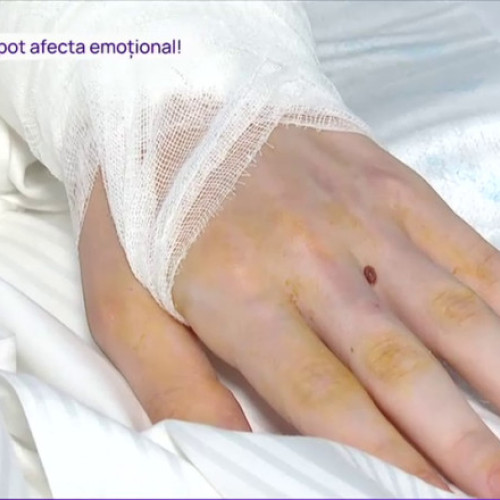
Nationale
Tinerii și selfie-urile în tren: Mărturiile unor adolescenți despre momente limită
Postat pe 15 Jan 2024
Update 1 an în urmă
Timp de citire: 6 minute
Articol scris de: Maria Simionescu
Alarmă dată de medici despre un pericol la care adolescenții încă se expun: selfie-urile făcute pe tren. În încercarea de a obține o fotografie perfectă, pun în pericol viața și, în cel mai bun caz, rămân cu sechele pe viață. Psihologii explică că trend-ul este alimentat de dorința tinerilor de a obține validare pe rețelele sociale. Specialiștii cer campanii online pentru a conștientiza pericolul.
David, un adolescent de 15 ani, povestește: "Nu îmi dau seama ce s-a întâmplat. M-am electrocutat și când m-am trezit, prietenul meu încerca să mă salveze cu un hanorac." David continuă cu detalii traumatizante despre episodul care l-a schimbat pentru totdeauna. Aceasta ar trebui să fie o lecție pentru cei tentați să își pună în pericol viața pentru popularitatea online.
Cristina Stoica, medic primar chirurgie plastică: "A fost adus la Spitalul de Copii Grigore Alexandrescu cu arsuri pe 80% din suprafața corpului, intubat și ventilat mecanic. A fost tratat în terapie intensivă." David a ajuns la spital cu arsuri pe 80% din suprafața corpului.
Prof. Dr. Dan Enescu, medic primar chirurgie generală: "Chances are, we we're lucky that he survived. Electrocuting oneself like that is extremely dangerous. We're trying our best, but with burns like that, survival is usually a very rare outcome. He fought hard, and that helped us in treating him." Vlad, another 15-year-old boy, was also a victim of this dangerous trend. He has been in the hospital for two months with burns covering 80% of his body. He had a slim chance of survival, but the wrong choice he made has put his life on pause. He electrocuted himself while seeking an impressive selfie on top of a train at the Târgu Jiu train station.
Vlad shares: "We think it's cool to take these kinds of pictures, to post them online and get likes and comments. Most of us do it to impress others. We put ourselves in danger, without thinking it through. We should think twice before taking such risks. You can lose your life for something so foolish."
Doctors warn that electrocution injuries leave permanent scars, not only physically but emotionally as well. This is a tragic experience for both the victim and their family.
Vlad opens up about his traumatic experience: "I already have a fear of trains and I don't dare to get on one."
Vlad's mother shares: "It was extremely difficult for us. When we found out, we rushed to the hospital, but we couldn't even feel the ground beneath our feet. We found him on the train tracks and asked what happened. He just said 'mom'. Even the doctors shed tears with us. It was indescribable."
Psychologists attribute this trend to the typical recklessness of teenagers. They advocate for online campaigns to raise awareness about the dangers of climbing on train wagons.
Mirela Zivari, psychologist: "At this age, they don't know how to evaluate right from wrong, or healthy from dangerous. They are willing to take all sorts of risks. Online campaigns would have a greater impact, as adolescents are more likely to listen to those closer to their age rather than adults."
Raluca Alexandru, medic primar chirurgie generală: "We call on the education system, teachers and guidance counselors to address this issue and raise awareness among students. We shouldn't be on train wagons, we should ride inside them. It's an accident that can easily be avoided. We should never climb on train wagons, whether they are stationary or on a dead-end track, as there are high voltage wires above them. Even if we don't touch them, they can still create an electric arc and cause electrocution and burns."
At Spitalul Grigore Alexandrescu, 10-15 teenagers are brought in every year after electrocuting themselves while attempting to take selfies on trains.
After a painful trauma and their lives forever changed, Vlad and David have a message for those who thought taking a selfie on a train was harmless.
David shares: "They should think twice before doing anything and not end up like me.
